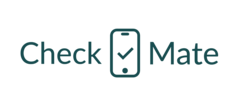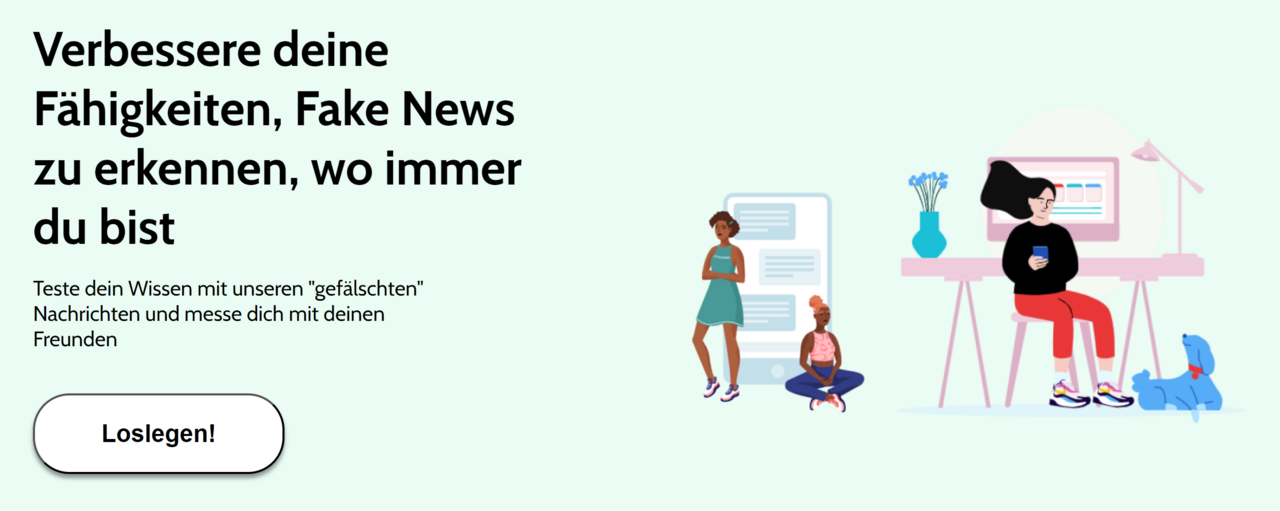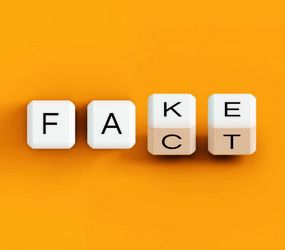
Smartphone, computer, Internet access and TV set - almost 100 % of all households in Germany are equipped with digital media devices. As a result, children and young people have daily contact with these devices. Media consumption is a natural part of their everyday lives as they discover their world with and through media.
This discovery is overshadowed by false and misleading information which is becoming more prominent. In Germany, there are six interactions with fake news for every real news post on Facebook. Many young people have limited knowledge about the functions and working methods of journalism. School as an educational institution has the function of imparting to children a large part of the knowledge they need for life in society. According to the German government, this includes not only reading, writing and arithmetic, but also the new cultural technique of media literacy.
PROJECT GOAL
Develop an interactive tool:
- that indicates whether one is able to distinguish fake news from real information, based on the answers of the person conducting the test
- that is tailored to information and fake news from the area of social media
- that increases media literacy of high-school students in a playful way and encourage critical thinking when consuming information on social media
RESULTS
Successful training for detecting fake news.
Even small stimuli can help pupils better debunk misinformation.
Even simple clues, such as paying attention to the source of fake news articles, lead to a significantly better ability to distinguish between correct and false information in the form of news articles.
This is the result of an educational intervention based on a self-developed web app conducted by the student research team CheckMate of TUM: Junge Akademie. Pupils of grades 10 to 12 at three Munich high schools participated in November and December 2022. The aim was to increase the ability to detect fake news.
Furthermore, the study showed that even a short training period leads to first small improvements in fake news recognition among pupils. To achieve long-term and significant effects, larger scale initiatives would be essential in the combat against fake news and their propagation.
During the intervention of the TUM team, implemented in a 45-minute school lesson, pupils from Gymnasium Derksen, Gymnasium Kirchheim and the European School Munich were exposed to a web app containing a total of 24 articles retrieved from online portals of traditional newspapers and from social media. Among these were articles from online magazines such as "Rubikon” which frequently comments on political events in the form of conspiracy theories. The pupils were instructed to assess the veracity of the presented articles on a 5-graded scale from "fake" to "true" while being divided into two groups: The treatment group received immediate feedback on whether the rating was correct and indications on typical characteristics of fake or real news articles after each question, whereas the control group moved on to the next article without feedback. Significant performance differences could be observed: For example, a truthful article about the use of a diabetes drug to lose weight was rated as "rather true" or "true" by 83 percent of the treatment group, compared with only 47 percent of the control group. However, such results were not observed for all questions.
TEAM

- Sophia Duggen, Biochemistry
- Til Hagendorn, TUM-BWL (Chemistry)
- Manfred Klemt, Politics & Technology
- Katharina Küllmer, PhD in Life Sciences
- Wenxuan Li, Information Systems
- Miguel Marcano, Informatics
- Lucas Schnack, Informatics
- Vinh Phuc Tran, Mathematics
- Steffen Wedig, Chemical Engineering
TUTORS
- Andrea Schittenhelm
- Jonas Ruchti
CONTACT
E-Mail: checkmate@ja.tum.de

